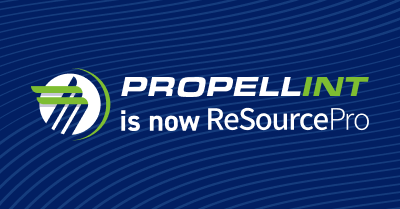Susan is the Vice President of Growth Solutions at ReSource Pro.
Between economic and talent challenges, increasing compliance obligations, and more, 2023 is set to be another interesting year for the insurance industry. Let’s explore the top trends affecting the space today and examine the impact they’ll have on retailers.
1. The Talent Challenge
The talent shortage continues to be one of the biggest trends affecting the industry in 2023. Between resignations, aging out, and quiet quitting, insurance organizations are losing an unprecedented share of their workforce. For retailers, the pressure remains high to develop a winning talent acquisition/retention strategy and employment value proposition. Those who fall behind risk an erosion of profitability and client satisfaction. In addition, organizations must be wary of the increased likelihood of errors and omissions as their most seasoned employees retire.
2. Economic Conditions / The Hard Market
The economic turbulence of the past few years is another significant concern for insurance. Reports suggest that 2023 will see heightened inflation and volatility, and a recession is increasingly likely. At the same time, other factors like social inflation, unpredictable weather events caused by climate change, and rising losses—such as those in the auto sector—are contributing to a hard market environment.
For retailers, these conditions could see claims costs and wage levels increase while business activity decreases, and placement/remarketing becomes significantly more labor intensive. The flux in coverage created by the hard market could also create adequacy and E&O risks. There are some silver linings, however. Higher interest rates have typically shown to be beneficial for intermediaries, and premium rate increases mean higher commission revenue.
3. Mergers & Acquisitions
Last year saw a notable drop in broker and agency M&A compared to 2021 due to higher interest rates and other economic factors. While 2023 will be an “active year” for M&A, according to Reagan Consulting, retailers will be paying especially close attention to the value of these deals. There will be an increased focus on evaluating the kind of risks being purchased and whether cultural integration will be successful. Retailers will also be exploring strategies to reduce post-acquisition friction and maximize revenue per employee.
4. Growth of Surplus Lines Market
Surplus lines continues to grow at record rate, with premiums reaching $63.32 billion in 2022, an increase of 24.1% over 2021. More and more mainstream risks are ending up in this market than previously, and more retailers are combining admitted and non-admitted products to best serve the needs of insureds.
Retailers seeking to do business in the surplus lines market should be aware of its heightened complexity, which includes vastly different regulatory requirements than the standard market, reduced commission revenue and policy retention, and more costly administration. However, becoming fluent in the surplus market and building relationships with wholesalers can be reputational and competitive advantages.
5. Compliance Obligations
The regulatory burden is rising for the insurance industry, from increasingly prevent cyber security and data privacy laws to new license disclosure requirements. For instance, NAIC’s Insurance Data Security Model law—which establishes data security standards for insurers, agents, and other entities licensed by the state department of insurance—is gaining momentum, with 22 states having adopted the statute as of June 2022. Meanwhile, a new California law—which could expand to other states—requires licensees to include their license number in email communications.
For retailers, the cost of compliance is likely to increase, though excelling in meeting privacy and security requirements could prove to be a competitive differentiator.
6. Embedded Insurance
Embedded insurance, which bundles insurance coverage with a buyer’s purchase of a product or service, is growing in prominence. Conning predicts that this distribution model could account for a whopping $70 billion in premium by 2030, increasing the threat of disintermediation for brokers. However, this model may also open new revenue streams for brokers who choose to develop their own programs.
Effective Solutions For Retail Agencies and Brokers
ReSource Pro’s diverse offerings provide retail insurance organizations with the people, processes, and technology necessary to address these market challenges and client demands. Learn how we can help by exploring our solutions and services.



